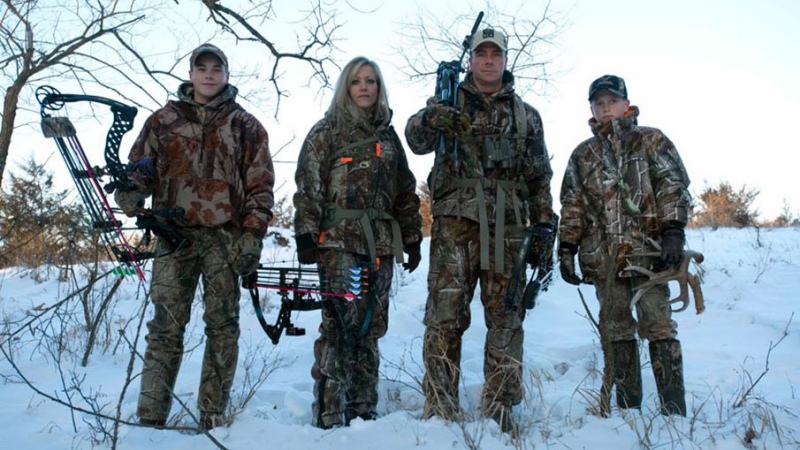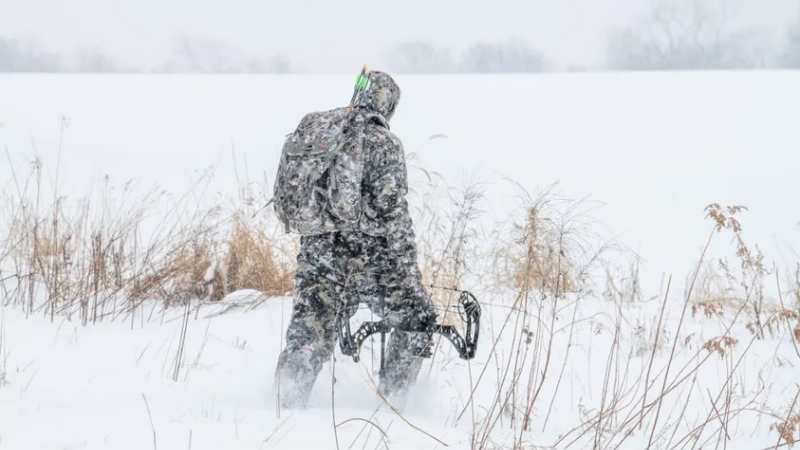Enhance Your Experience with Hunting Cold Weather Jacket
When it comes to hunting in cold weather, having the right gear can make all the difference between a miserable, unsuccessful outing and a comfortable, rewarding one. Among the essential items in a hunter's cold - weather arsenal, a high - quality hunting cold - weather jacket stands out as a game - changer. This article will explore how such a jacket can enhance your hunting experience in frigid conditions, covering aspects such as insulation, waterproofing, mobility, and more.
BOWINS Garment,as a leading hunting clothing manufacturer, owns 3 hunting clothing factories and offers OEM and ODM service for global hunting clothing brands. We specialized in manufacturing custom hunting jacket in a wide range of size and fit for customers worldwide with 17+ years industrial experiences. In this article,there are several pertinent suggestions for the choice of cold weather hunting jacket for your reference.
1. Insulation: Staying Warm in the Chill
One of the primary functions of a hunting cold - weather jacket is to provide excellent insulation. Cold weather can sap your body heat rapidly, leading to discomfort, reduced focus, and even potential health risks. Modern hunting jackets are designed with advanced insulating materials. For instance, many use synthetic insulation like PrimaLoft or Thinsulate. These materials are engineered to trap air, which is a poor conductor of heat. As a result, they create a barrier between your body and the cold outside environment, keeping you warm.
PrimaLoft insulation, for example, is known for its warmth - to - weight ratio. It can provide significant warmth even in a relatively lightweight jacket, which is crucial for hunters who need to move quietly and efficiently through the wilderness. Thinsulate, on the other hand, is highly effective at blocking cold air while still allowing some breathability. This breathability is important because hunters often engage in physical activities such as hiking to their hunting spots. If a jacket doesn't allow moisture (from sweat) to escape, it can make you feel cold and clammy once you stop moving.
Down - filled jackets are also a popular choice for cold - weather hunting. Goose down, in particular, offers exceptional warmth. The clusters of down feathers trap air pockets, providing excellent insulation. However, down has a drawback in wet conditions. When down gets wet, it loses its insulating properties. To counter this, many down - filled hunting jackets are treated with a water - repellent finish. This helps to keep the down dry in light snow or drizzle, but it's not as effective as fully waterproof synthetic materials in heavy rain or wet snow.
2. Waterproofing: Keeping Dry in the Elements
In cold weather, getting wet can be extremely dangerous. Water conducts heat away from your body much faster than air, increasing the risk of hypothermia. A good hunting cold - weather jacket should be waterproof. Waterproof membranes like Gore - Tex are commonly used in high - end hunting jackets. Gore - Tex is a thin, breathable fabric that allows water vapor (from your sweat) to escape while preventing liquid water from entering.
There are also other waterproof technologies available. Some jackets use a DWR (Durable Water Repellent) finish in combination with a waterproof inner layer. The DWR finish causes water to bead up on the surface of the jacket, rather than soaking in. This initial defense against moisture helps to keep the outer fabric dry and reduces the likelihood of water penetrating the inner layers. Additionally, seams in waterproof hunting jackets are often taped. Taping the seams ensures that there are no gaps through which water can seep in, providing complete waterproof protection.
3. Mobility: Freedom to Move Quietly
Hunting requires a great deal of movement, whether it's stalking prey, climbing hills, or getting into position. A cold - weather jacket that restricts movement can be a major hindrance. Modern hunting jackets are designed with mobility in mind. They often feature articulated sleeves and gusseted underarms. Articulated sleeves are shaped to mimic the natural movement of your arms, allowing for a full range of motion without binding. Gusseted underarms provide extra fabric in the underarm area, which further enhances mobility.
Materials also play a role in mobility. Stretch - woven fabrics are increasingly being used in hunting jackets. These fabrics have a certain amount of elasticity, allowing them to stretch as you move and then return to their original shape. This not only provides freedom of movement but also helps the jacket to fit better and stay in place. Additionally, jackets with adjustable cuffs, hoods, and hem can be customized to fit your body snugly, preventing cold air from entering while still allowing for easy movement.
4. Durability: Withstanding the Wilderness
Hunting takes place in rugged environments, and a cold - weather jacket needs to be able to withstand the wear and tear. Durable materials are essential. Nylon and polyester are commonly used in the outer shell of hunting jackets due to their strength and resistance to abrasion. Nylon, in particular, is known for its toughness and ability to withstand being brushed against branches, rocks, and other rough surfaces.
Reinforced panels are often added to areas of the jacket that are more likely to experience wear, such as the elbows and shoulders. These panels can be made from a thicker, more abrasion - resistant material. Some jackets also feature reinforced stitching, which is stronger than standard stitching and less likely to come undone under stress. A durable jacket not only lasts longer but also provides continued protection in the field, ensuring that you don't have to worry about rips or tears compromising your warmth and comfort.
5. Camouflage: Concealment in the Environment
Camouflage is a crucial aspect of hunting. A cold - weather jacket with effective camouflage patterns can help you blend into your surroundings, increasing your chances of getting close to your prey without being detected. There are various camouflage patterns available, each designed to match different hunting environments. For example, if you're hunting in a forested area, a pattern with a mix of greens, browns, and blacks can help you blend in with the trees and underbrush.
Digital camouflage patterns have become increasingly popular in recent years. These patterns use a pixelated design to break up the outline of the hunter. The small, irregular shapes create a more natural - looking appearance when viewed from a distance. Some camouflage patterns are also designed to be effective in both visible light and infrared light. This is important because some animals, such as deer, have the ability to see in the infrared spectrum. Jackets with infrared - blocking properties can help keep you hidden from these animals' enhanced vision.
6. Storage and Functionality: Carrying What You Need
A good hunting cold - weather jacket should also offer practical storage options. Multiple pockets are a must. Inside pockets can be used to store items like maps, binoculars, or a small first - aid kit. These pockets are often designed to be easily accessible while wearing the jacket, allowing you to quickly retrieve what you need without having to remove the jacket.
Outside pockets can be used for storing gloves, a hat, or ammunition. Some pockets are designed with zipper closures to keep items secure, while others may have flap closures for added protection against the elements. Additionally, some hunting jackets come with specialized features such as a built - in game bag or a place to attach a tree - stand safety harness. These added functionalities can make your hunting experience more convenient and efficient.
In conclusion, a high - quality hunting cold - weather jacket is an investment that can significantly enhance your hunting experience in cold weather. By providing warmth, keeping you dry, allowing for freedom of movement, being durable, offering effective camouflage, and providing useful storage and functionality, such a jacket becomes an essential part of your hunting gear. When choosing a hunting cold - weather jacket, it's important to consider your specific hunting needs, the type of environment you'll be hunting in, and your budget. With the right jacket, you can face the cold weather with confidence and increase your chances of a successful and enjoyable hunting trip.












